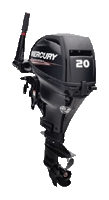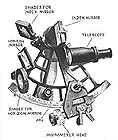AROUND THE WORLD ON DINGHY


Equipment | |
|
The correct selection of equipment is the basis of the success or failure of many expeditions. In this case the question is not about brands or manufacturers but for general concepts. Scot bet on small horses to drag his sledge while Amundsen preferred dogs. The horses died in the cold, while the dogs survived. Amundsen conquered the South Pole while Scot died. The boat we want to use, must float well in the sea and slope down on fast waters, which are two mutually excluding conditions. However, we have an idea and hope that we will have it implemented in such a way. The engines are standard and should be able to stand 36 000 km. The only thing that is necessary is the correct assessment of power, fuel consumption and weight of the engine, considering that we would have to carry it by hand. |

|
|
Fuel supply is also a big challenge. The whole route is inhabited and along the rivers there are settlements at a maximum distance of 300 km. The structure of the fuel tank must be envisaged for a distance 500 km at full capacity. Since there is only one longer passage, additional vessels will be engaged. The test floating will reveal the exact consumption at an optimal engine power. However, all 72 points of refueling should be checked and if necessary, air supplies must be provided. Satellite communication, navigation and even ordinary phones would require electricity. Fortunately in the recent years the solar cells have significantly increased their efficiency when reasonably used and are absolutely possible to satisfy our needs without being dependent on the continent even if the engine is not working. In contemporary yachting to the question what would you do if your GPS breaks down, the answer you will get is — use the spare GPS. In spite of the planned professional navigation and our personal phones, which are absolutely sufficient in extreme situations, we believe that the well tested mechanical compass, sextant and chronometer should be available as well. |

|
|
Potable water is within 20 liters a day. Considering the small loading capacity of the boat, it is almost impossible to carry large supplies. We have a solution tested in another voyage, where water from the Danube was consumed for a continuous period of time without any negative consequences. The dust and sand are removed by a mechanical filter. If any bacteria have been left, they are killed by chlorine tablets, after which the smell and the possible heavy metals are removed by a filter with active coal. The equipment is small enough and although it is boring, there is plenty of free time for water processing all day long. Food is also an important element but there are settlements at a distance of at least one day’s travel, and a man can survive without eating a whole month. Therefore we believe that there should not be any problem if we do not maintain large food supplies. However, we envisage carrying fishing accessories and hunting weapons. The sea water temperature in the northern latitudes seldom exceeds 4-5 degrees even in the summer. This means that if the boat turns upside down, nobody would survive in the water for a long time and it is absolutely possible all of the staff to die from hypothermia. Therefore, despite the inconvenience, we intend to cross open seas with dry neoprenes, which should guarantee survival even in severe storms. |

|
